The pistol, or single-leg squat, is a unique exercise that combines strength, flexibility, and grace in a manner unlike many other movements. There are several pieces to the pistol puzzle, and proper execution requires mastery of each element.
Consider this article to be a user’s manual of sorts for the pistol, complete with a step-by-step progression as well as a troubleshooting guide.
Before we get started, it is worth noting there are many possible methods for practicing pistols. I have attempted to synthesize information from a variety of sources, including Carl Paoli, Al Kavadlo, Ido Portal, and others, in an effort to take what is useful and discard the rest. I recommend you do the same with the content below.
Pistol Progressions
1. Bodyweight Squat, Feet Shoulder Width, Full Range-of-Motion
You should be able to easily knock out at least twenty clean, controlled bodyweight squatsbefore even considering pistols. Start with a shoulder-width stance, and progress towards a slightly narrower hip-width stance over time.
2. Bodyweight Squat, Feet Together, Full Range-of-Motion
Before beginning work on pistols, it is recommended that you can squat all the way down on two feet with a very narrow stance.
3. Pistol Squat, Bottom Position Hold, Grab Onto Pole
Grab onto something sturdy and squat all the way down. At the bottom, stick out one leg and hold it. Switch sides and repeat.
4. Pistol Squat, Eccentric on One Leg, Concentric on Two Legs, Grab Onto Pole
While holding onto a pole, perform a slow, controlled pistol negative. Bring the other leg in at the bottom, and stand up on two legs.
5. Pistol Squat, to a Box
Moving away from the pole, now you will pistol down to a box. Start with a tall box and gradually progress lower.

6. Pistol Squat, Assist with a Band (Around Hips)
Hook a band around your hips so that you can work the full movement with slightly less bodyweight at the bottom. Work towards being able to use a thinner band or a lower attachment point.
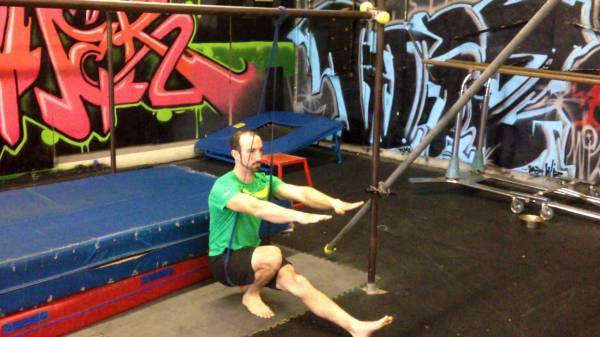
7. Pistol Squat, Counterbalance With a Weight
Use a 10-20lb weight (dumbbell, kettlebell, or weight plate) to counterbalance your hips as you perform a full pistol. Gradually progress to a lighter weight.
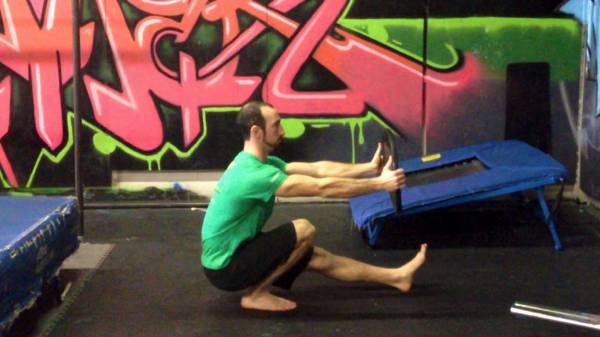
8. Pistol Squat, Stand on Box, Free Leg Vertical
Stand on a box tall enough so that your free leg can remain vertical. Progress towards a lower box, thus increasing the amount of hip flexion in the free leg.
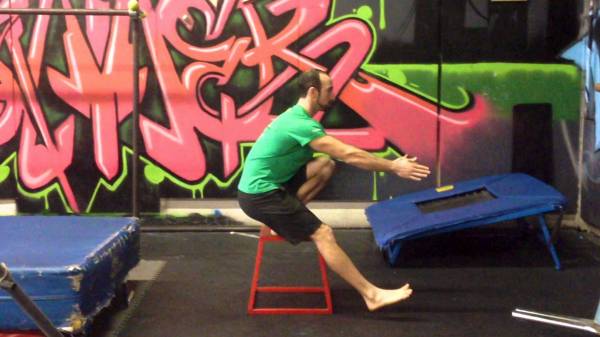
9. Pistol Squat, Elevate Heels
At any stage in this entire progression you can wear Olympic weightlifting shoes or put a tiny weight plate under your heels. This decreases the amount of ankle dorsiflexion needed to squat all the way down.
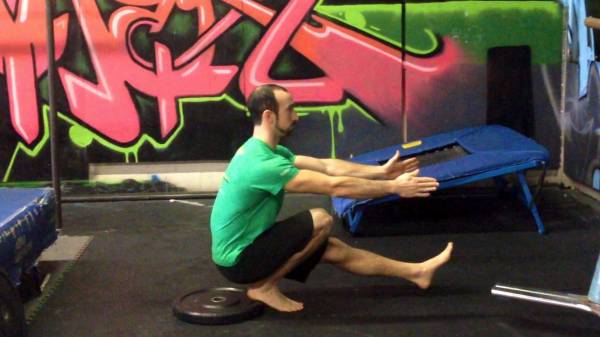
10. Pistol Squat
If you spend the time and committo the progressions listed above, you will be able to perform full pistol squats.
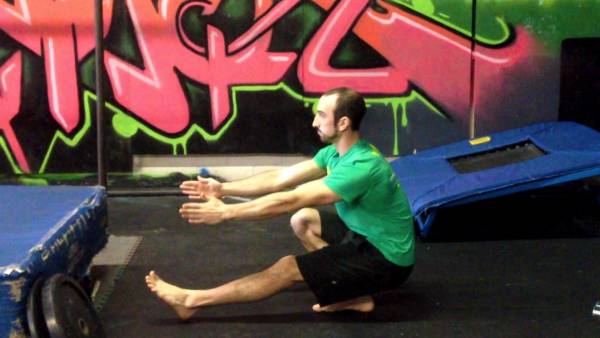
(Purposely absent from this list are candlestick rolls, or the rolling pistol, because in my experience it is more difficult for trainees to learn the more dynamic version before the standing version.)
Troubleshooting Guide
Problem #1: You fall on your butt at the bottom of the pistol.
Quick fix: Hold a small amount of weight (10-20lbs) out in front of you for a counterbalance.
Long-term solution: Spend more time pistol squatting while holding onto a vertical pole, gradually decreasing the amount of assistance the pole provides.
Problem #2: Your foot comes up onto your toes and your heel comes up into the air.
Quick fix: Wear Olympic lifting shoes, or put a plate under your heel.
Long-term solution: You need more ankle dorsiflexion. Stretch your calves and Achilles tendon, and try some self-myofascial release on the bottom of your foot.
Problem #3: Your hip flexor of the straight leg cramps.
Quick fix: Stand on a box and pistol squat with the straight leg vertical instead of horizontal.
Long-term solution: Practice L-sit progressions and other hip flexor strength endurance work, like knees-to-elbows and toes-to-bar.
Problem #4: You collapse into the bottom position of the pistol.
Quick fix: Squat down onto a box, gradually decreasing the height of the box.
Long-term solution: Build more time spent holding the active bottom position of the pistol, and try some slow negatives where you control all the way to the bottom.
Problem #5: You have trouble balancing side-to-side.
Quick fix: Look at a fixed point several feet in front of you during the entire rep.
Long-term solution: Practice more pistols barefoot, thus learning how to grip the ground with your toes and use your entire foot for balance. You also might have weak VMO muscles, thus necessitating specific work such as step-ups and split squats.
Conclusion
There you have it: a step-by-step progression to building your pistol squat, along with a troubleshooting guide to help you with any issues along the way.
Practice pistols every single day if you are still chasing the skill, and seek out the advice of other trainers and athletes.
Related: The Best Leg Workouts






